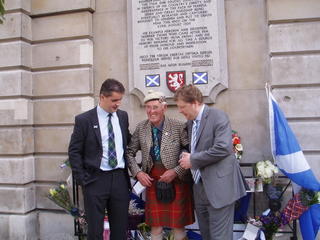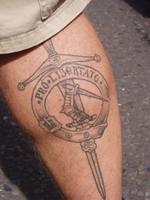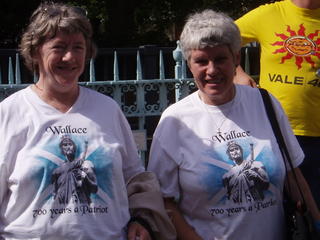
 "The purity and absolutism of refusal; the simplicity of struggle and the complexity of power; the guerrilla fighter and the guardian of the realm; the uber-macho military warrior and the calculating political strategist; pathbreaking nationalist and pioneer unionist – Wallace’s life encompasses a host of characters and qualities. He is a protean figure".
"The purity and absolutism of refusal; the simplicity of struggle and the complexity of power; the guerrilla fighter and the guardian of the realm; the uber-macho military warrior and the calculating political strategist; pathbreaking nationalist and pioneer unionist – Wallace’s life encompasses a host of characters and qualities. He is a protean figure".So writes David Hayes in his assessment of William Wallace in history, imagination and identity, published yesterday on the 700th anniversary of Wallace's execution.
The photos here illustrate a more straightforward narrative at the Wallace memorial in Smithfield, London on 23 August. Several hundred people attended the short event. It started with an address from David Ross, who has followed the route of Wallace's last journey for a film, and continued with drumming (lively, warlike, a touch of Afro-Celt to it) and bagpipes. The crowd was diverse - dressed in everything from medieval highland clothes to business suits - good natured, friendly and proud (scroll down).
The two ladies smiling at the camera are from near Burnley (Lancashire, not Lanarkshire). The hairy calf tatooed Pro Libertate is not one of theirs. It belongs to a messenger biker.
The passion and pride was deeply felt, but for by far the greater part this event did not feel like a toxic form of nationalism to me. 21st century identities can be both real and fluid - an aspiration championed in other circumstances by Daniel Barenboim, Edward Said and others. It's a nice touch, for example, that one of the pieces the West-Eastern Divan orchestra played in Ramallah on 21 August was the quintessentially English Nimrod. And the pockmarks in the stone around the Wallace memorial are from the Battle of Britain, which did more than anything else to fire British identity in the 20th century.




No comments:
Post a Comment